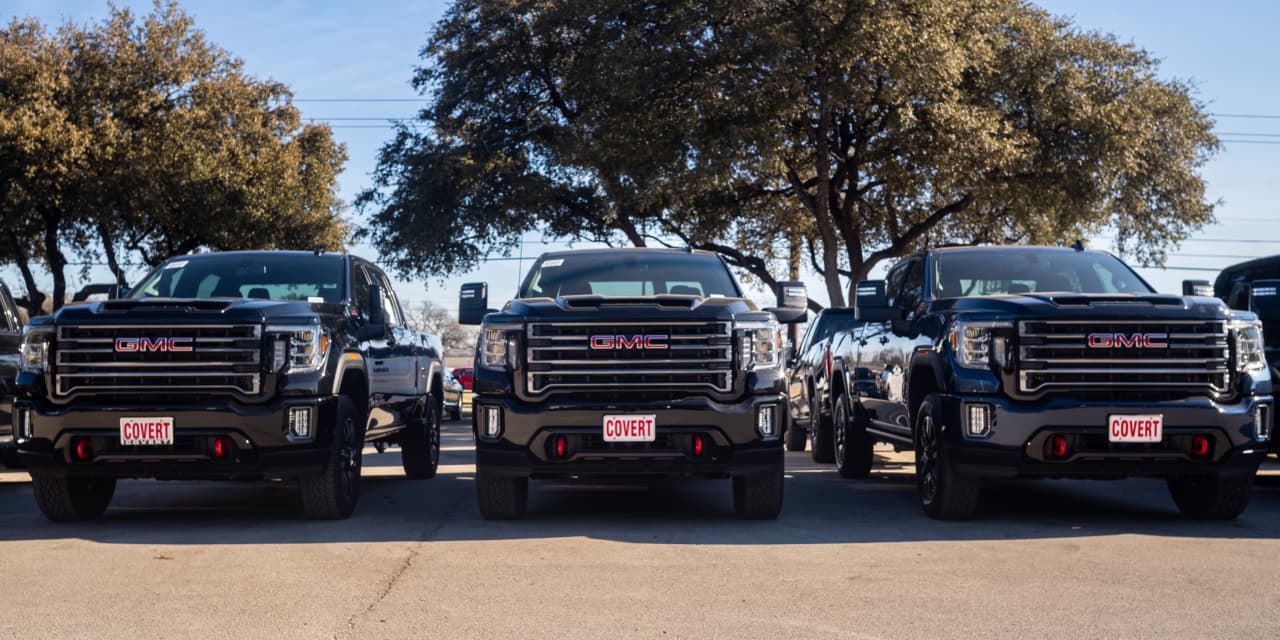As the United Auto Workers strike against the Detroit-Three auto makers drags on, the costs, to the people and the companies, mount. It isn’t impacting each auto maker equally though. One is hurting a little more than the other two.
General Motors
(ticker: GM) is the only one of the three that hasn’t been spared once after a UAW strike expansion. The strike began on Sept. 15 with workers walking out at one plant for each company. The strike was expanded on Sept. 22 with more GM and
Stellantis
(STLA) workers walking out the strike was expanded again on Sept. 29 with additional GM and
Ford Motor
(F) walking out.
About 9,300 of GM’s roughly 46,000-strong UAW workforce are on strike, about 20% of the total. The numbers for Ford are about 7,900 and 57,000, or 14% of the workforce. The numbers for
Stellantis
are about 7,300 and 41,000, or 18% of the workforce.
About 26% of the GM UAW labor force isn’t coming to work which includes layoffs related to the strikes and the impact to plants of a lack of parts. The numbers for Ford and Stellantis are about 16% and 19%, respectively.
The numbers are a bitter pill for GM. The UAW walked out, en masse, at GM in 2019, leading to $3.6 billion in lost operating profit. GM still earned $8.4 billion in 2019.
That was a 40-day strike. Costs accrued at a rate of about $90 million a day. The number won’t be that high in 2023, since vehicles are still being made. Investors will find out how much on an earnings conference call, likely after the strike is settled. GM didn’t immediately respond to a request for comment about strike costs.
Stellantis looks more impacted than Ford, but the percentage of UAW workers striking is only one measure of impact. Stellantis is the most global of the three auto makers. Only about half of the company’s sales are generated in North America. The percentages for Ford and GM are roughly 75% and 90%, respectively. (GM has joint venture income in China, that doesn’t get recognized in top line sales.)
Ford is arguably the second most impacted. The UAW is striking at Chicago facilities that make the Ford Explorer. After the F-150, Explorer is Ford’s best-selling brand in the U.S.
Another expansion is likely on Friday. Who will be targeted, where the strike will expand, if it does, and how many workers will be impacted is anyone’s guess. Wells Fargo analyst Colin Langan wrote in September that a 45-day timeline was reasonable. That implies about three more weeks.
Spear Invest’s Ivana Delevska is a little more optimistic than Langan. Despite the union and company rhetoric, she tells Barron that the “bid-ask spread” is closer than people assume.
Bid-ask is investment jargon for what someone wants to get paid and what someone wants to pay. Delevska looked at what Ford workers in Canada represented by Unifor got and believes, in the end, wage increases in the range of 25% are likely. That’s only a few percentage points away from current offers. What’s more, that level of increase isn’t crippling to the auto makers, she says. Everyone has been getting raises in this era of high inflation.
Her fund
Spear Alpha ETF
(SPRX) holds some Ford shares. She expects them to rebound when the strike is resolved.
Since the start of July, when a strike started looking likely to investors, GM and Ford shares are down about 18% and 19%, respectively, while the
S&P 500
is off about 5%.
Stellantis shares are up about 7%. Stellantis is a more global company, relatively less impacted by U.S. operations. It’s also a cheaper stock. Stellantis shares trade for about 3.4 times estimated 2024 earnings, while GM shares trade for 4.6 times, and Ford shares trade for 6.6 times.
Write to Al Root at allen.root@dowjones.com
Read the full article here











Leave a Reply